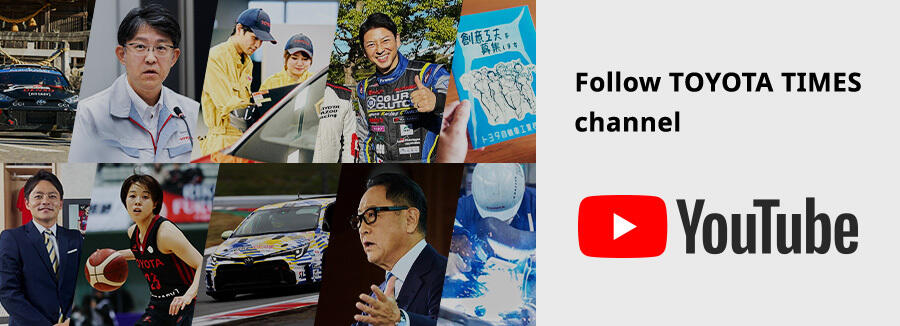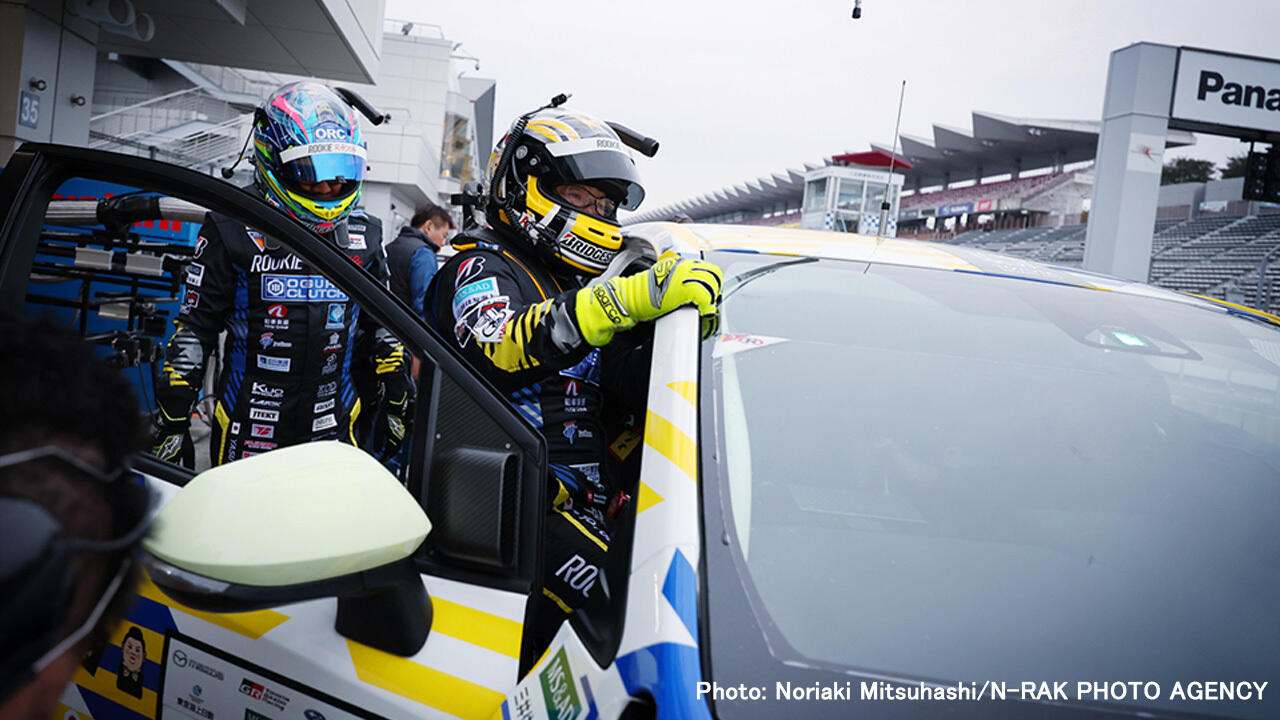
Three years after the hydrogen-powered Corolla began racing in the Super Taikyu Series, the 2024 season's final round featured announcements of new initiatives toward creating a hydrogen society.
Building the future of cars
Fuji Speedway also featured another vehicle that will underpin a hydrogen society: a next-generation road service vehicle jointly developed by Toyota and the Japan Automobile Federation (JAF).
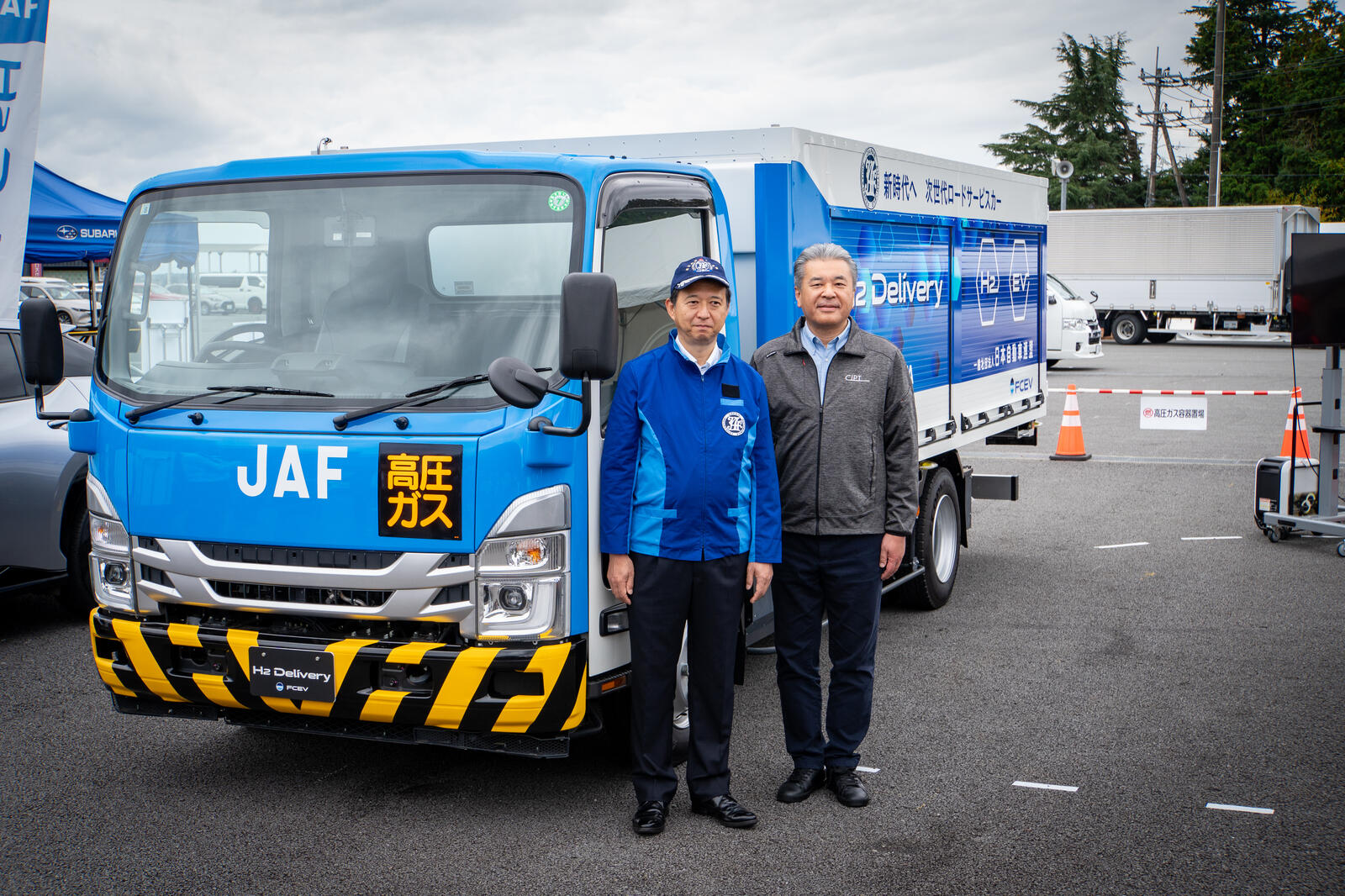
Until now, a hydrogen-powered car that ran out of fuel on the road would need to be picked up by a tow truck and taken to a refueling station.
However, an essential step in creating a carbon-neutral hydrogen society is creating an environment that ensures safe, reliable driving for hydrogen-powered vehicles. That is where the next-generation road service vehicle comes in.
The road service vehicle can fill a car with enough hydrogen to drive approximately 100 km. Refueling takes around one minute, with the entire process over in just 10 minutes. The 10 kg of hydrogen it carries on board can fill up to 16 cars.
As a fuel cell electric vehicle (FCEV), the road service vehicle can also generate electricity to charge BEVs. It is set up for 50 kW rapid charging, which takes around 10 minutes, with the complete operation over in about 20 minutes. The vehicle can charge 19 cars, giving each a driving range of some 50 km.
JAF Executive Director Masao Notsu explained this next-generation road service.
Executive Director Notsu
Dispelling concerns about vehicles such as BEVs and FCEVs running out of fuel is a critical aspect in moving towards carbon neutrality, and this is a mission that we can fulfill.
One point was being able to refuel hydrogen, but I think the added ability to supply power is also a key factor.
We already had several vehicles equipped with 10 kW batteries for rapid charging, but with 50 kW we have five times the capacity, allowing us to charge multiple cars in succession. I think this greatly improves convenience and work efficiency.
Aside from towing, the new vehicles can also provide all of the other road services offered by JAF, including portable fuel cans for cars needing gasoline, as well as assisting with flat batteries and tires.
Road service vehicles capable of refueling hydrogen were first unveiled at Motegi, Round 5 of the 2023 Super Taikyu season. At the time, however, regulations related to where hydrogen filling could take place, the clearance distances required, and transport certifications meant that, although the vehicles were fully operational, they could not actually provide refueling services on the road.
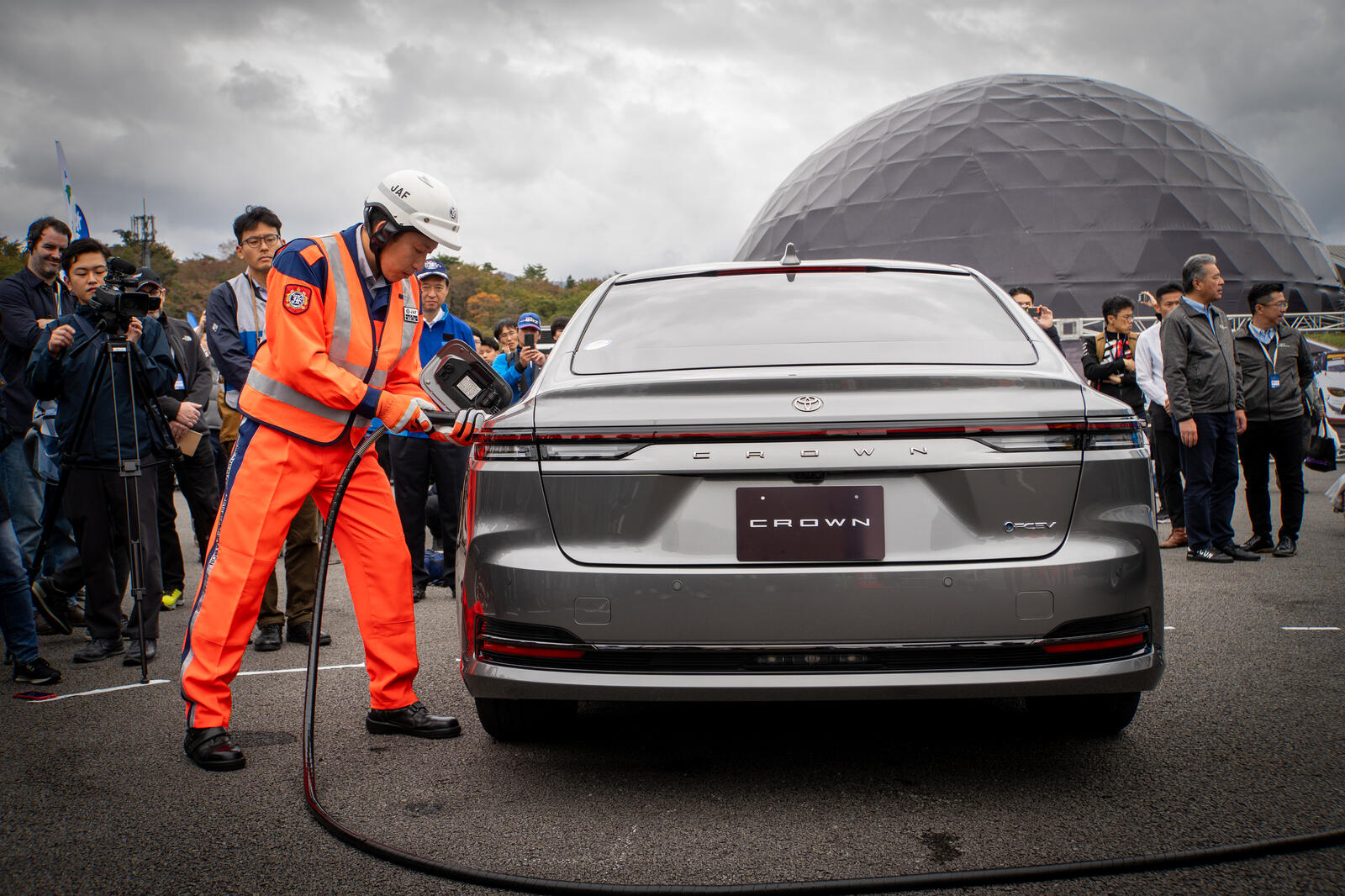
This time around, the biggest difference is that the upgraded road service vehicle does not need to be fenced off during operation. A series of discussions with various government ministries have paved the way for deregulations, which meant that a demonstration could take place at the Super Taikyu venue.
JAF Road Service Department General Manager Takayasu Takeda
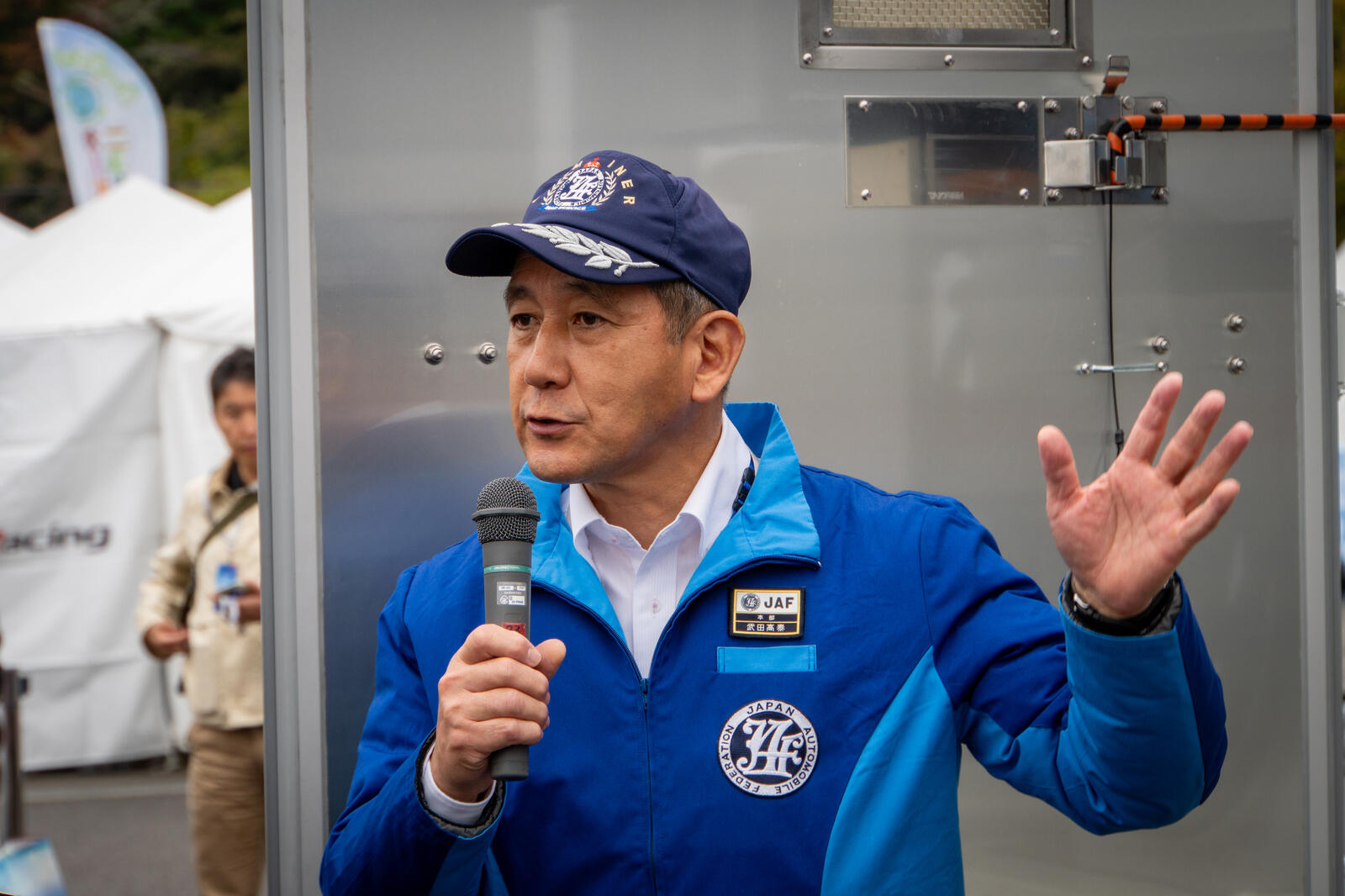
If these vehicles could tow, they would be an all-in-one solution. Since Motegi, the height has also changed from 3 meters to less than 2.55, by mounting the tanks horizontally instead of vertically.
At present, the tank for hydrogen refueling and power generation is separate from the tank that fuels the road service vehicle. If all these functions could be handled by a single tank, we would free up the space currently used by the (refueling/power generation) tank, enabling the vehicle to provide towing as well.
That would make it useful in many different situations. It really feels like the next generation is drawing near.
In addition to the “co-challenge” crew of ST-Q class racers, Super Taikyu also brings together partners like JAF, who can be found in the pits, paddocks, event spaces, and various other areas, working toward the goal of a carbon-neutral society.

